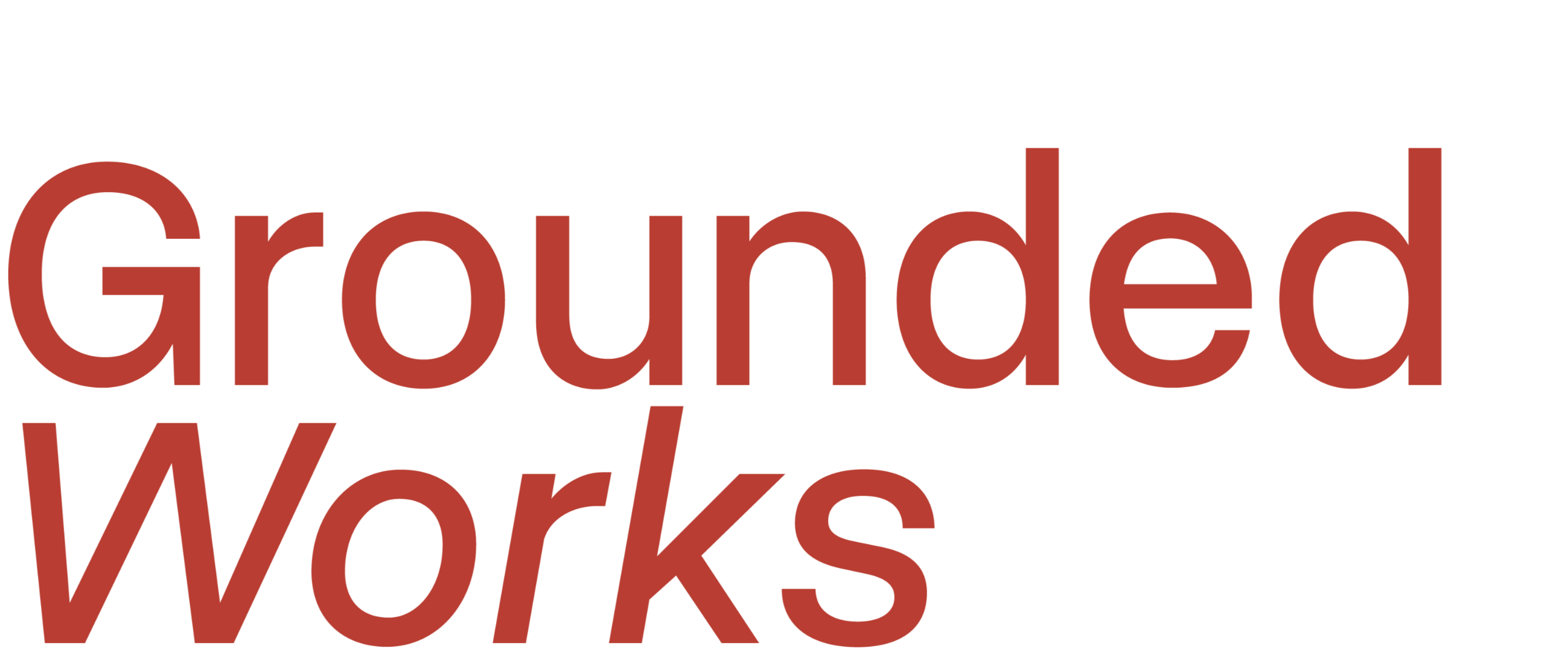
Design Studio
Design Build.
Passive House.
Design Build Vol. 1 - So, you want to build...
Where to Begin When Designing Your Ideal Home on the Mid North Coast
Have you been thinking, scheming, or imagining your ideal home? Maybe it’s the one you already live in, just different: a wall removed here, new windows added there, perhaps a fresh kitchen or bathroom. Many clients tell me they struggle with knowing how to begin the journey of designing and eventually building a new home. But if this sounds familiar, take a moment to realise—you’ve already begun.
Every Project Begins with an Idea
Each sustainable home design starts with a problem or series of problems:
Not enough space for a growing family
Too much space once the kids have left home
An ageing, mouldy, thermally uncomfortable house
Or perhaps a ‘doer-upper’ that’s never been “done up”
From here, your design brief starts to form. It usually has three parts:
Problems to be solved – like poor thermal comfort or lack of storage
Opportunities to be taken advantage of – such as orientation, views, or energy upgrades
Design solutions you’ve already imagined – open-plan living, a healthier building envelope, or a low-tox fit-out
This is the foundation for any new home design, renovation, or Passive House project on the Mid North Coast of NSW.
Why Engage a Building Designer or Architect?
At this stage, it might feel natural to call a builder and get cracking. While engaging a builder early can be useful, there are critical steps in between.The engagement of a skilled building designer or architect can add enormous value to your project. Their role is to interpret your brief within the context of today’s planning regulations, bushfire (BAL) requirements, and sustainability standards. A good designer doesn’t just draw —they ensure your project is:
Sustainable and energy-efficient (meeting BASIX / NatHERS targets)
Healthy and comfortable (avoiding mould, dampness, and toxic materials)
Compliant with local council planning rules (Bellingen Shire, Coffs Harbour, and surrounding councils)
As the lead consultant, your designer is tasked with finding solutions to problems you didn’t know existed but which could otherwise derail your dream build.
Turning Ideas Into Reality - Plans to Architecture
Engaging a Mid North Coast building designer or Architect may not be where your project began, but it’s often the catalyst that moves your ideas into reality. Whether you’re exploring Passive House design in Bellingen, natural building methods in Dorrigo, or a modern coastal home in Sawtell or Urunga, the first step is always the same: a clear design process led by someone who shares your values.Your dream home deserves more than sketches and guesswork—it deserves a robust, thoughtful design journey that results in a home that’s not only beautiful, but sustainable, comfortable, and built for the future.
Design Build Vol. 2 - Design Process
You may be about to spend more money on a building project than you have ever seen. Given that, it's only fair to say you’re heavily invested in achieving the best outcome. To execute the ideal build, you need a design process that’s been tested and refined. But what exactly is a design process, and how does it apply to architecture?A design process involves a series of interconnected lenses to analyse and break down a project into its components. The beauty of design is that everyone has a unique process, leading to different outcomes. My process can be categorised into three lenses: context, character, and cost.
Context is both broad and specific, physical and abstract. A project must respond to its immediate physical context—topography, climate—while also aligning with local, state, and national building regulations and the surrounding neighbourhood.Character is about intent: addressing the brief and creating something functional yet beautiful. It considers how materials influence space and how spatial relationships impact people. While the results of character are often hard to quantify, they’re clear in the experience of the space—how it feels when you're in it.Cost is often the elephant in the room, but it’s essential to getting the project built. Every design decision has cost implications, and understanding whether short-term savings could lead to long-term issues is crucial. Clients often want it all but lack the resources to afford everything. This is natural, as we all want value from our investment. However, understanding the true cost of building is key to designing within your means. Clients frequently over capitalise on floor area and sacrifice character as a result. It’s worth considering: would you prefer a modest size home, finished to your liking or a larger space that falls short of expectations?Paradoxically, I’ve divided a cohesive process into three parts which could easily lead to a misunderstanding that each can be understood or practiced in isolation, when in fact, each has to be understood in relation to each other. Context influences character—how a project looks and feels is shaped by both its environment and the client’s vision. Character impacts cost—nothing is free, and design choices affect the budget. Cost, in turn, impacts context—how resources are allocated can change the surrounding environment. This cycle continues throughout the design process.Your project is too important to leave key decisions to chance. Strive for the best solution, not just the easiest one.
As published in Mid North Coast Arts Guide Dec 2024
Design Build Vol. 3 - Approvals
Submitting a Building Project to Council on the Mid North Coast: What You Need to Know
If you’re planning to design and build a sustainable home on the Mid North Coast of NSW—whether in Bellingen, Coffs Harbour, Dorrigo, Sawtell, Urunga or surrounding areas—you’ve probably heard the phrase “submit to council”. But what does that really mean for homeowners wanting to create a Passive House, natural building, or energy-efficient home?The approval process exists to ensure that local, state, and federal planning objectives are met. While it can feel daunting with so many rules and regulations, understanding these requirements helps your project flow smoothly instead of becoming a roadblock. For those seeking eco-friendly homes, healthy homes, or natural building methods on the Mid North Coast, knowing the process is essential to turning your vision into reality.
What Needs to Be Submitted?
Typically, council submissions include:
Architectural drawings
Consultant reports (such as bushfire, heritage, or BASIX/NatHERS energy ratings)
Title information and survey documents
These are the foundations for council approval whether you’re planning a new Passive House build in Bellingen Shire or an alterations and additions project in Coffs Harbour.
The Three Main Approval Pathways
Complying Development Certificates (CDC)
A CDC suits simpler projects like houses on straightforward sites or small additions (pergolas, decks etc.). To qualify, projects must meet strict guidelines around building height, setbacks, and floor area. Approval can be fast-tracked through council or a private certifier.
Development Applications (DA)
More complex projects—including many custom homes, Passive House designs, or natural building projects—require a DA. Council assesses how your design will impact infrastructure, neighbours, and the wider community. DA drawings should show:
External finishes and materials
Building heights and form
Window and door placements
Service connections
Site analysis
Site coverage and access
Design compliance
DAs are processed through the local council planning department, but larger projects may be escalated to the state planning office.
Construction Certificates (CC)
Once your DA is approved, a CC ensures your home meets the National Construction Code (NCC). This covers safety, structural integrity, bushfire compliance (BAL ratings), and energy efficiency requirements. A CC may be issued through council or a private certifier.
Exempt Development
For very minor works (like small garden sheds or fences), no approval may be required. These are outlined in the State Environmental Planning Policy: Exempt and Complying Development Codes 2008.
Who Can Help?
While your local council planning officer can explain which pathway applies, your building designer or architect will guide you through the process. At Grounded Works Design Studio, we specialise in helping Mid North Coast clients design Passive House homes that use natural building techniques to create sustainable architecture that inspires.By engaging a like-minded designer who understands local council planning rules, energy efficiency standards, and bush fire regulations, you can ensure your dream home is not only beautiful but also approved for construction.
Design Build Vol. 4 - Construction
So, your project is finally at the stage where the rubber meets the road—it’s time to build! The big question now is: who’s going to bring your dream home to life, and how? Will you take the reins as an owner-builder, or hire a licensed builder to manage the process?A common misconception is that a builder is the person swinging a hammer and constructing your home from the ground up. While that may be true on smaller projects, most builders are licensed professionals who oversee the entire construction process. They coordinate the tradespeople, solve problems before they arise, and act as the key point of contact between you, the designer, the building surveyor, and the tradesmen. This role demands not only experience but also excellent organization and communication skills to keep everything running smoothly.On the other hand, an owner-builder is typically the client who steps into the shoes of the builder. While you may not need to get your hands dirty, you’re responsible for managing the project from start to finish. This means overseeing the trades and stepping in to solve issues as they come up, ordering materials, ensuring that inspections are completed and approving work. If you have the time, knowledge, and patience to stay on top of the details, this could be a rewarding option—but it’s definitely not something to take on lightly.Two common contracts are Cost-plus and fixed price. With a Cost-plus contract, you pay for materials and labour, plus a 10-20% profit margin for the builder. A fixed-price contract sets the total price for a defined scope of work, offering more financial certainty for you, however, the builder takes on more risk, as they’re locked into that price—even if material and labour costs rise. While a fixed-price contract offers protection, it may not be the perfect fit depending on your relationship with your builder. Building companies have a higher risk of insolvency than most other industries. A builder going bankrupt mid-project is a worst-case scenario. You’d need to hire a new contractor, likely at a higher cost, which could blow your budget. This is why the cheapest quote isn’t always the best.Whether you choose to build your home yourself or hire a professional, understanding the process is key to success. The more you know, the smoother the journey will be.
As published in Mid North Coast Arts Guide March 2025
I Want to Build a New House – Where Do I Begin?
Establish a Collective Vision
Every home starts with an idea—often sparked around shared values. Before getting into technical drawings or costings, it’s vital to build a collective vision. If you’re building with a partner or family, make sure everyone agrees on what matters most: energy efficiency? natural materials? indoor air quality? aesthetic style? size vs quality?This shared vision becomes the north star for all decisions. It helps clarify what you will compromise on, and what is non-negotiable—like using non-toxic finishes, a certain level of insulation, or achieving a Passive House standard. Homes built this way tend to deliver greater long-term satisfaction.
Begin to Understand Your Context
Your site, its climate, orientation, light, and seasonal shifts will shape much of what your house can do. Start observing: how does the sun track over the lot? Which parts are shaded? How do winds blow? How does light shift in winter vs summer? Do you have trees that are deciduous and allow light through in winter but provide shade in summer? These observations are essential for natural building, passive solar design, and achieving the comfort and energy savings of a healthy home. You might even begin marking the shadow lines from particularly trees at set times each week or month to demarcate the differences.For example, north-facing windows (in the Southern Hemisphere) gather winter sun, while deep eaves or shade trees protect from summer heat. Understanding soil, slope, existing vegetation, and rainfall patterns is also crucial. The more you understand your site’s unique features and constraints, the more responsive and sustainable your home can be.
Engage with a Like-Minded Designer
Once you have your vision and site observations, find a building designer or Architect whose values align with yours. Someone who cares about Passive House design, natural materials, craftsmanship, and indoor environment. Shared ethos matters: you want someone who sees your priorities (health, sustainability, build quality) not as extras but as integral.Be clear on their process: how they do site analysis; how they model thermal performance; how they detail for airtightness; how they work with local trades. Transparency is key. A good designer will explain their steps, the decisions you’ll need to make, and how they manage trade-offs (for example between cost and material quality).
Understand How Your Vision Aligns with Likely Build Costs
It’s one thing to want premium materials, high performance, non-toxic finishes, triple glazing etc., and another to understand what that costs vs a more standard build. Discuss with your designer the point at which you can begin getting cost advice. This protects you from surprises and allows you to prioritise. The Mid North Coast has plenty of quality, reliable builders who are looking to build your bespoke home. Rather than waiting until the design has been completed, we recommend partnering with a reputable builder from the outset and asking them for costing advice throughout the design process. Some builder may charge for this service, but that cost will often be recouped in the construction stage. Regardless of whether this service is provided at no cost or charged hourly, there is inherent value in this collaborative model between client, designer and builder which proves invaluable to the end result.Some aspects of a Passive House or healthy home approach add upfront cost: better insulation, high-quality windows, mechanical ventilation with heat recovery. But over time, savings in energy, maintenance, and increased comfort often offset those costs. Knowing potential costs early helps you decide what features are worth investing in, and where you might scale back without undermining quality.
Passive House on the Mid North Coast
Designing a home on the Mid North Coast of NSW comes with unique opportunities and challenges. Warm summers, mild winters, and the lush natural environment make this region one of the most attractive places to live. At the same time, these conditions demand careful attention to how homes are designed, built, and maintained. A Passive House approach ensures year-round comfort, outstanding energy efficiency, and healthier living. For those considering building or renovating, it’s worth exploring why Passive House is particularly relevant here.
What is Passive House?
Passive House (or Passivhaus in its German origin) is a globally recognised building standard that focuses on energy efficiency, thermal comfort, and indoor air quality. Unlike conventional construction, Passive House design relies on a combination of airtightness, high-performance glazing, continuous insulation, controlled ventilation, and solar orientation to create a stable indoor environment.Homes designed to this standard consume significantly less energy for heating and cooling compared to typical builds. The result is not just lower running costs but also a higher standard of comfort and resilience. Importantly, Passive House isn’t about building oversized or extravagant structures—it’s about thoughtful design, premium materials, and attention to detail.
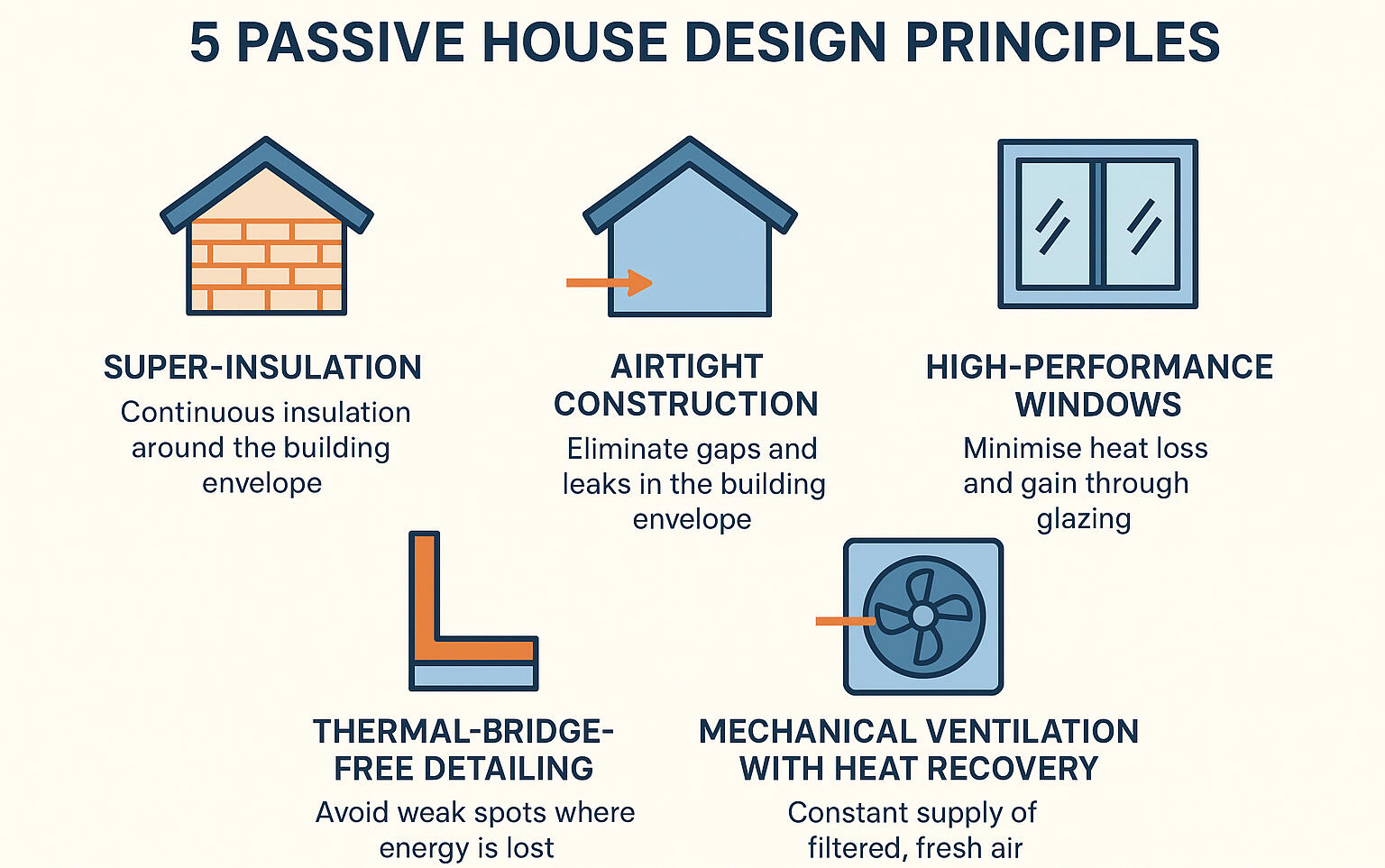
Why is Passive House Relevant to the Mid North Coast?
The Mid North Coast is known for its climate diversity—warm humid summers, cooler inland winters, and weather patterns that shift dramatically between coastal and hinterland areas. Conventional homes here often rely heavily on air-conditioning in summer and supplementary heating in winter, leading to rising energy bills and fluctuating comfort levels.A Passive House on the Mid North Coast is designed to handle these extremes. High insulation levels mean the home retains warmth on frosty mornings in Dorrigo, while airtight construction and shading strategies keep interiors cool in Coffs Harbour’s summer heat. Ventilation systems maintain fresh air without losing energy, meaning families enjoy year-round comfort with minimal reliance on mechanical heating and cooling.
Temperature Fluctuation
One of the biggest frustrations for local homeowners is how quickly indoor temperatures rise and fall. A lightweight home might heat up in the sun but lose warmth as soon as the evening breeze rolls in. Passive House construction addresses this with superior insulation, thermally broken double-glazed windows, and controlled solar gain.By maintaining a stable indoor climate, these homes protect occupants from uncomfortable swings. Whether you’re inland or on the coast, your home feels consistently pleasant. This stability also supports better sleep and reduces the stress on heating and cooling systems, extending their lifespan and lowering household costs.
Build Quality Matters
Humidity is a defining feature of the Mid North Coast. Excess moisture can lead to mould, condensation, and poor indoor air quality—issues many homeowners here have struggled with. A Passive House uses mechanical ventilation with heat recovery (MVHR) to provide continuous fresh air while balancing humidity levels.This creates an environment where moisture is carefully managed, reducing the risk of mould growth and structural damage. For families with allergies or sensitivities, the difference is noticeable: cleaner, drier, and healthier indoor spaces
Healthy Homes
A Passive House is more than energy efficient—it’s a healthy home. Constant hepa filtered fresh air supply, controlled humidity, and stable temperatures combine to support wellbeing. For families, this means reduced risk of asthma triggers, better sleep quality, and an environment that feels naturally comfortable.As awareness grows around the connection between housing and health, many Mid North Coast residents are seeking homes that do more than just provide shelter. They want spaces that nurture their lifestyle, support their wellbeing, and respect the surrounding environment. A Passive House achieves exactly that.
Conclusion: A Better Way to Build on the Mid North Coast
For those planning to build or renovate, considering a Passive House approach is an investment in comfort, health, and longevity. On the Mid North Coast, where climate, humidity, and lifestyle intersect, this design method provides solutions that conventional building often overlooks.At Grounded Works Design Studio, our focus is on creating homes that balance premium craftsmanship with sustainable performance. Whether it’s a compact home in Bellingen or a family retreat by the coast, Passive House principles ensure your space is built for the future
Passive House (PassivHaus)
The Passive House (PassivHaus) standard is gaining popularity in Australia, and we believe it’s an ideal fit for homes in Bellingen and the Mid North Coast of NSW. This model focuses on creating a building that delivers year-round thermal comfort, low energy use, and a healthy indoor environment. If you’ve been dealing with issues like mould or uncomfortable living conditions, a Passive House could be the perfect solution.At its core, the Passive House design approach treats your home as a system, ensuring that every element works together to reduce energy consumption and maximize comfort. One of the key benefits of this model is its attention to detail, resulting in high-quality, durable builds that stand the test of time. As registered Passivhaus Designers and members of the Australian PassivHaus Association, we collaborate with skilled local builders and certified PassivHaus experts to ensure your home meets the highest standards of sustainability and performance.Ready to start your Passive House project? Let’s discuss how we can help you create an energy-efficient, healthy, and comfortable home today.
Passive Solar & Sustainable Design
We utilise elements of passive solar and sustainable design to create homes that are energy-efficient and environmentally friendly. Our site-responsive designs take advantage of the natural elements of your property to optimize passive heating and cooling, reducing your reliance on artificial climate control.We incorporate thermal mass to regulate indoor temperatures, providing year-round comfort and lowering energy costs. With a focus on natural light, we ensure your home stays bright and inviting without consuming excess electricity. Our use of sustainable materials, such as locally sourced timber, stone, and eco-friendly finishes, help minimize the environmental impact of your build. Whether you’re building in Bellingen or elsewhere on the Mid North Coast, our goal is to design homes that blend seamlessly with the landscape and provide long-term value for both you and the planet.
Drafting Services
Our drafting services are focused on creating accurate and detailed documentation of existing conditions. We provide comprehensive 2D and 3D drawings that capture the current state of your property to ensure all aspects are accounted for in your project.This includes precise measurements, site analysis, and documentation of any existing structures, utilities, and topography. We also assist in obtaining building information certificates, ensuring your property complies with local regulations. Our goal is to help streamline the construction process by providing clear, reliable information that can be used in planning and approvals. Whether you’re undertaking a renovation or planning a new build in the Mid North Coast region, our drafting services provide a solid foundation for your project.
Development Applications
We support you through the complex process of development applications, ensuring your project moves forward smoothly.From start to finish, we offer a full design service and prepare comprehensive drawing packages that meet council requirements. We have extensive experience liaising with local consultants and council officers in Bellingen and surrounding areas, ensuring your project aligns with local zoning laws and building codes. Our goal is to help you navigate council approvals with ease, addressing any concerns along the way, so you can focus on bringing your vision to life.
Natural Building
We’re passionate about natural building techniques and incorporate them into our projects to create sustainable, energy-efficient homes that have a unique, organic character.From rammed earth to straw bale and light earth, we work with a variety of materials that are both environmentally friendly and aesthetically beautiful. We also use hempcrete, a natural, lightweight material known for its excellent thermal insulation and low environmental impact. Additionally, lime render and mud brick offer great thermal mass and durability, creating a comfortable indoor environment with minimal energy consumption.Whether you’re building in Bellingen or anywhere on the Mid North Coast, our natural building designs are tailored to create homes that are in harmony with the environment and provide long-term benefits to both the planet and your well-being.
Healthy Homes
We view health holistically and believe that a home should be an integral part of your well-being. In our designs, homes are treated as a system that supports your physical, mental, and environmental health. We focus on creating spaces that optimize indoor air quality, reduce toxins, and promote a healthier living environment. By incorporating low EMF design, we minimize exposure to electromagnetic fields, creating a space that supports better rest and overall health.We also prioritize mould resistance, selecting materials and implementing design elements that enhance airflow and moisture control, helping you avoid common health issues caused by damp, unhealthy living spaces. Our use of natural materials, such as timber and clay, not only creates a beautiful, calming atmosphere but also helps regulate humidity and improve indoor air quality.As a Mid North Coast building designer with a focus on sustainability, we are committed to creating homes in Bellingen and the surrounding areas that support a holistic lifestyle. With every project, we aim to design homes that foster well-being, comfort, and a deeper connection to the natural environment.
Services
Who We Are.
Our names are Josh and Annika Batterton and we are a young, vibrant team of two who make up Grounded Works Design Studio in Bellingen.We love working with local builders and clients who are interested in projects that place emphasis on quality. Our belief is that quality outcomes are achieved as a result of the relationships that we build with our clients and contractors.
What We Do.
We offer building design services and specialise in Passive Solar and Passive House Design.Our practice is centered around transparency, buildability, design & build quality, simplicity and attention to detail.We value the individual skill sets within a project that contribute to a greater whole. The outcomes that we produce facilitate the grounding of life, health, community, relationships and place.
Process.
The projects that we carry out are done with an understanding that our process is as important as outcome. We are passionate about producing an architecture that sets the foundation for relationships to evolve beyond the built project.
Material.
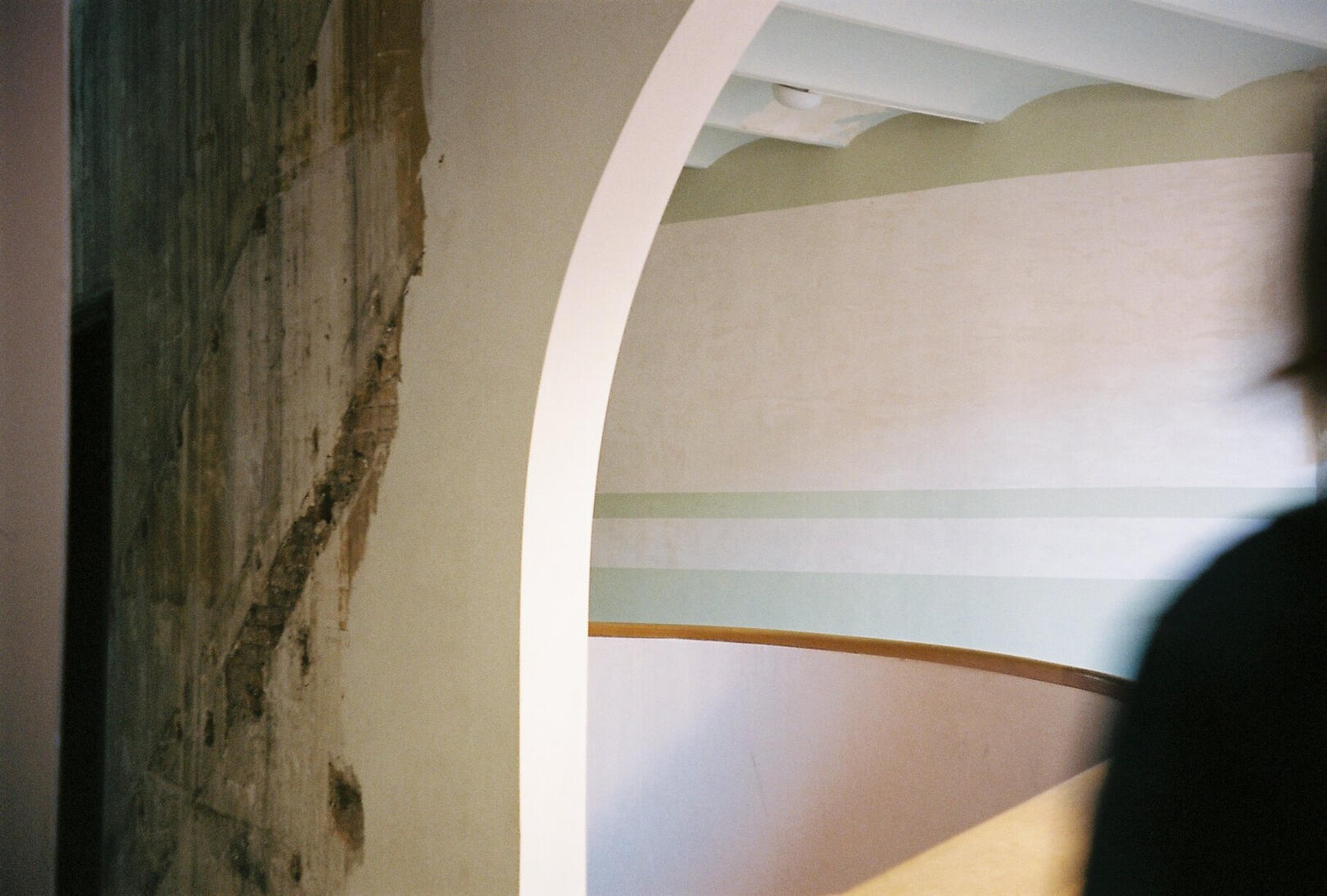
Quality builds are a product of considered design, high quality building materials and good craftsmanship. We are passionate about natural building methods, materials gathered from site and working with contractors to realise a projects potential.
Relationship.
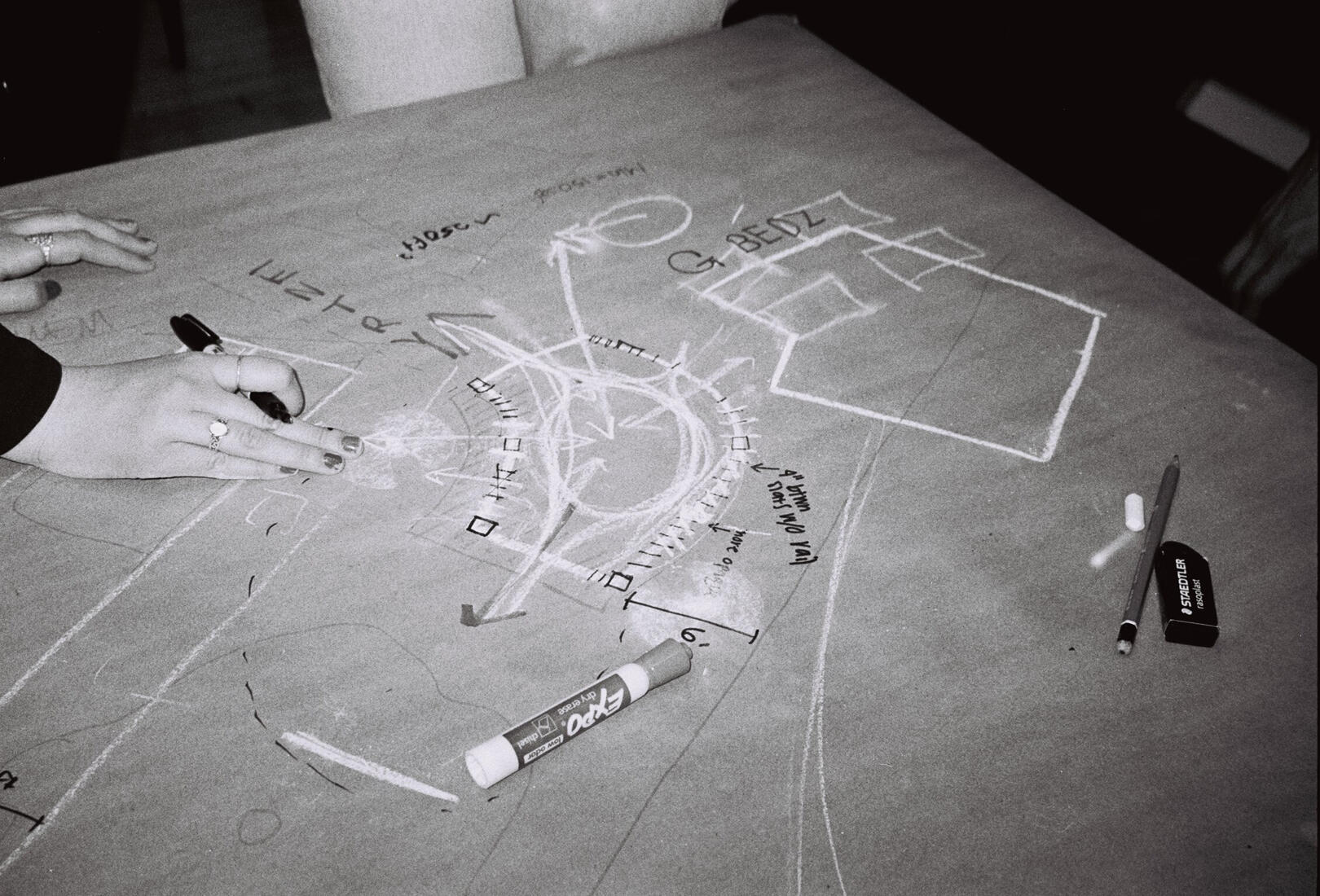
We want a legacy of connected people who are able to share knowledge, build community and develop relationships beyond built work.
Place.
Our focus is on localising the building industry, self reliance and community resilience. Connection to the natural world leads to being grounded in home, life, community and place.Each project has its own characteristics, qualities and possibilities. Through our process we turn constraints into opportunities that celebrate the uniqueness of the site.
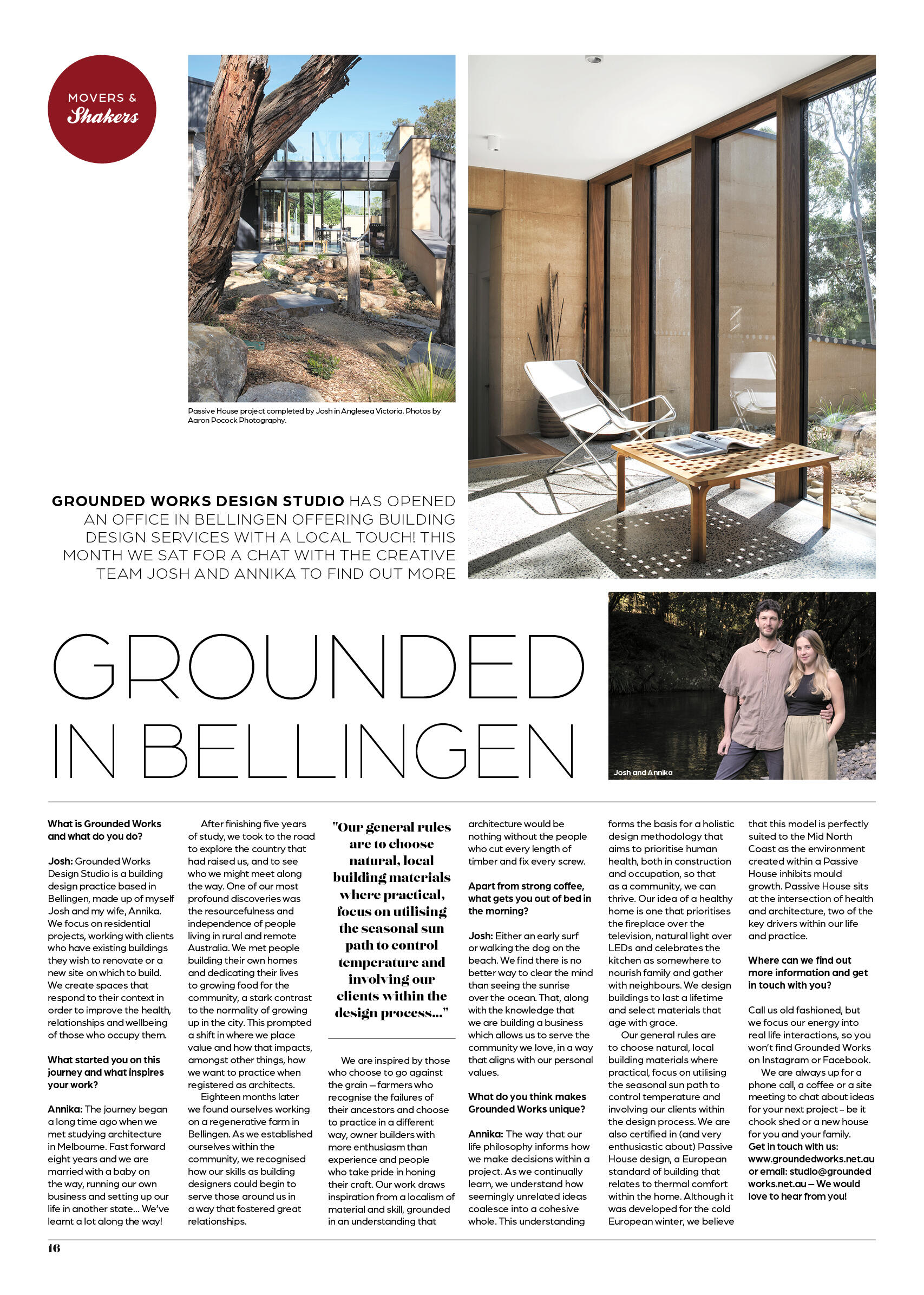
As published in Mid North Coast Arts Guide Aug 2024
Get In Touch.
We are always interested in connecting with new people.Whether you're a builder or contractor yourself, have some work that you'd like to engage us for or if you're wanting to connect in another way please get in touch.
| phone | |
|---|---|
| 0432 26 2 704 | [email protected] |
Testimonials.
Josh was great to work with, really on point and great communication, I’d recommend Grounded Works for any size project.Sam H.
We had a great experience with Josh. He supported us to design a shed renovation. His visuals allowed us to get crystal clear on the design and we are thrilled with the outcome. Josh listened, offered suggestions and adjusted our design efficiently and professionally.Hannah P.
Josh has been great to work with on the planning and submission of our veranda extension.Todd A.
Grounded Works Design Studio completed architectural drawings to CC stage of our commercial project.
They came highly recommended by another architect who was unable to take on the project at the time.
Grounded Works was excellent to deal with on all fronts.
Materials utilised were considered and sympathetic to the Heritage Streetscape the project was bound by.
A tight time line posed no problem and clear communication & a joint vision was appreciated.
Josh also assisted in finding a suitable local builder for the project.
We look forward to working with them again.Kerrie M.
Plateau House
On a windy and exposed, yet beautiful agricultural site exists a house made by and for a genuine craftsman and his wife. Materials were selected to age with the occupants - charred timber cladding and copper fascias. Timber lined ceilings with reverse brick veneer walls create a very warm internal environment that is conditioned to self regulate and provide the healthiest living space possible.
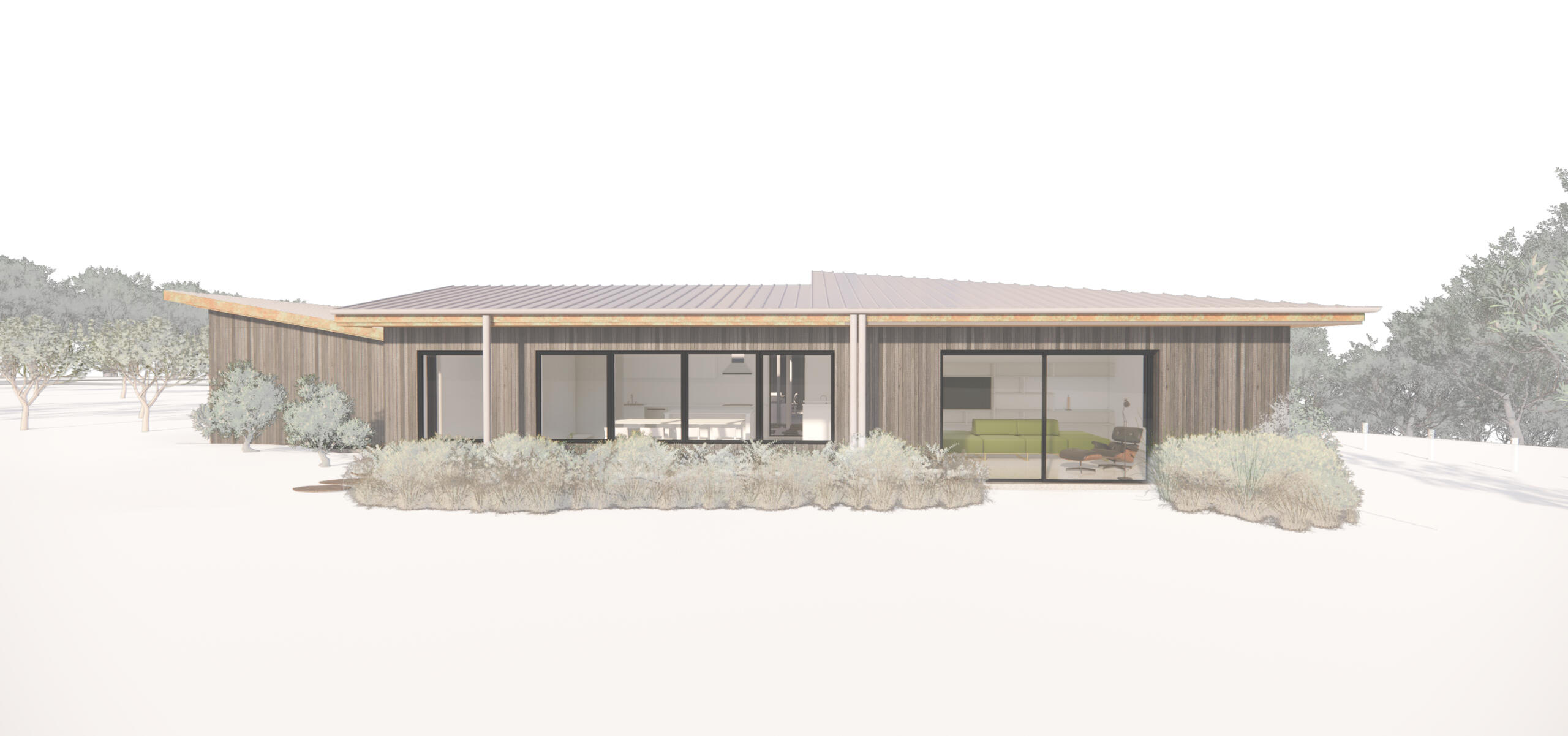
This house is designed using all of the features typically associated with a passive house, such as thermally broken double glazed windows & doors, heat recovery ventilation, thermal bridge free design, airtight membranes and continuous super insulation. Formally, the roof line seeks to provide a courtyard that provides refuges from the rare but harsh Westerlies whilst enabling a generous Northern aspect.
This project is design to BAL-19 standard.
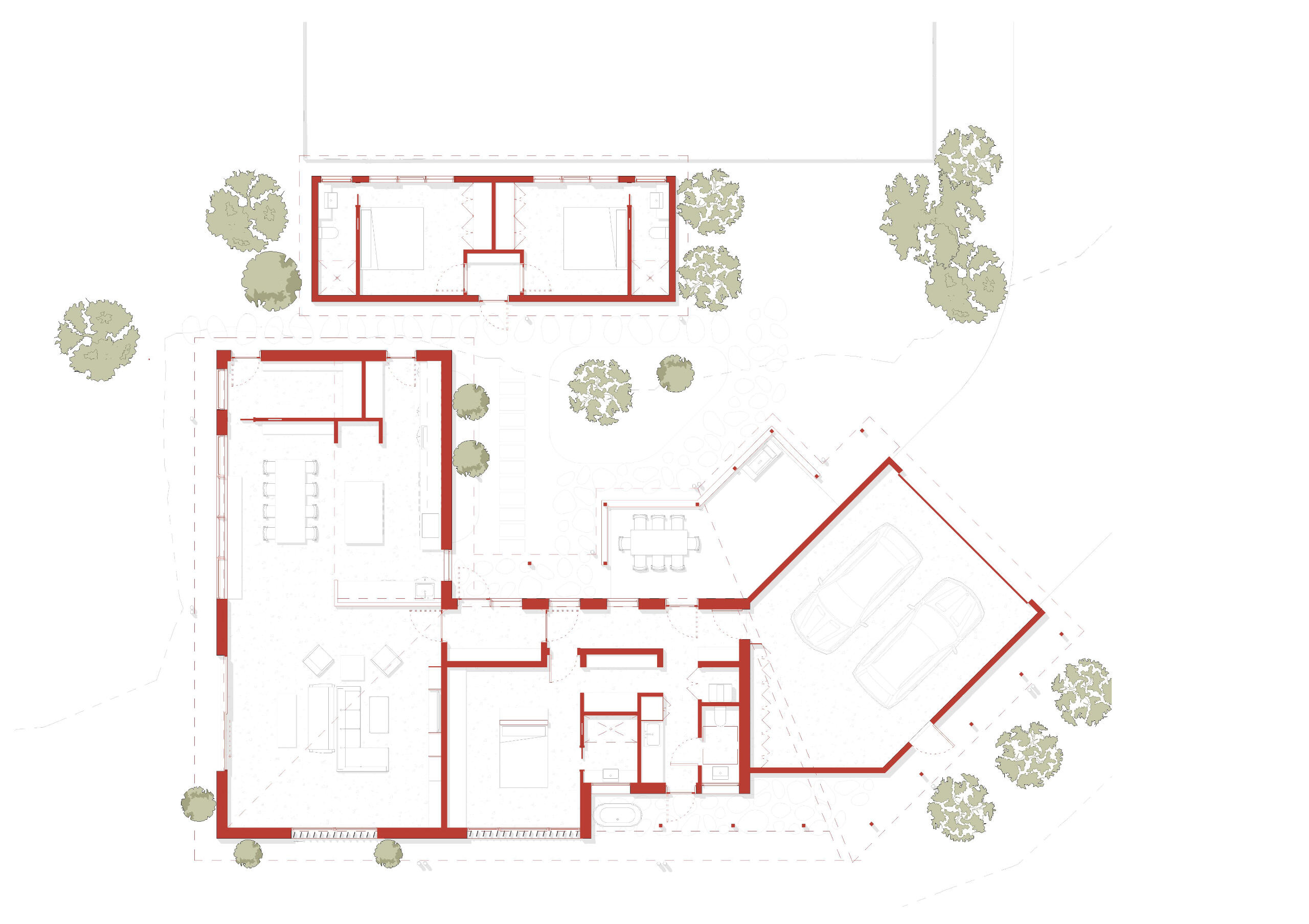
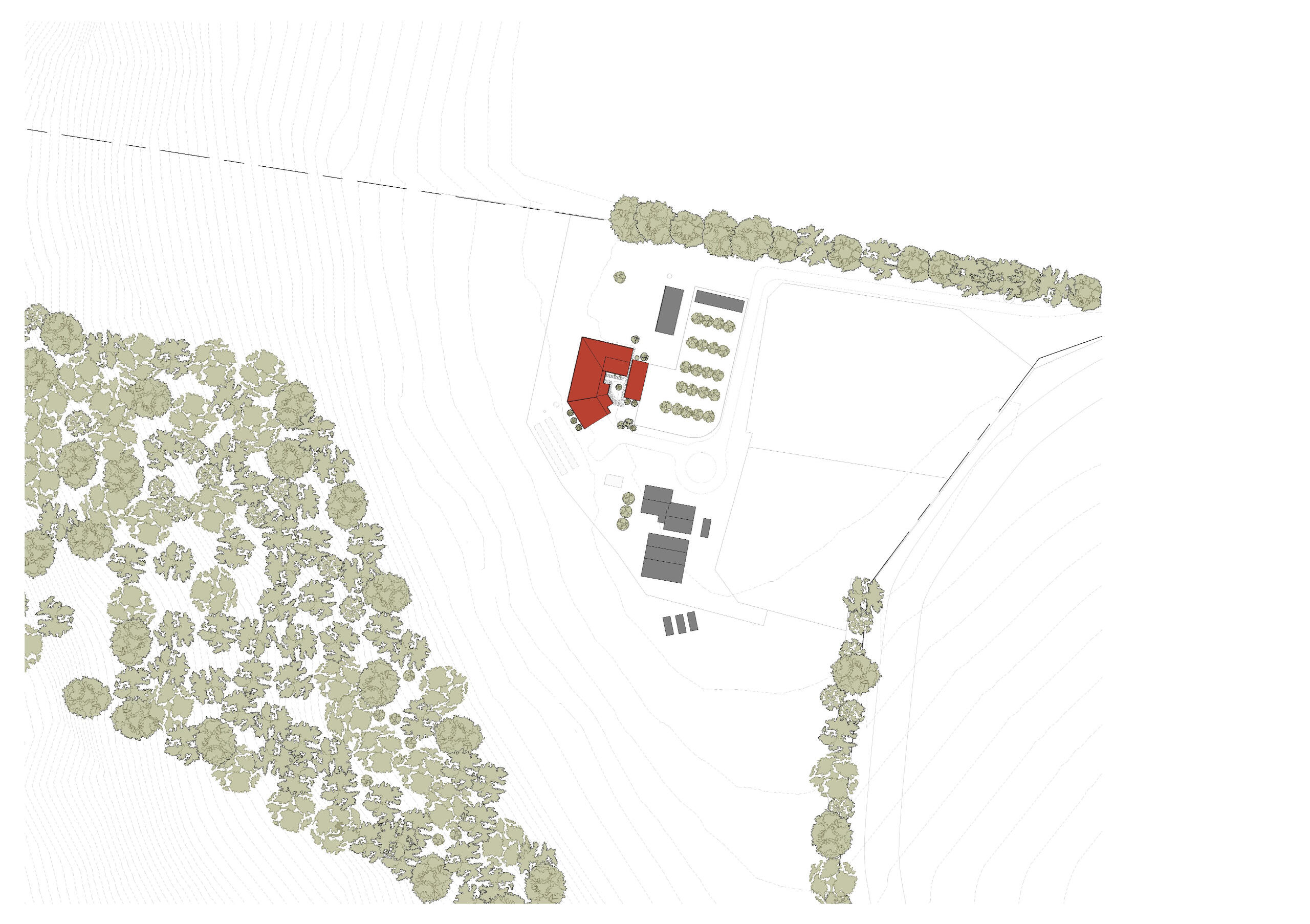
Otway Passive House
Nestled in the Otways, this project was born from the client's admiration of Frank Lloyd Wright's work, in particular the Wyoming Valley School. Deep eaves are expressed weightlessly at their corners and the internal condition is one of grandeur and that celebrates time spent together. The context demanded a lot of this home - Cold, wet, harsh winters with dry, hot summers. Plenty of time spent outside year-round meant that cover from rain and shade was necessity whilst skylights located on the verandah roof provided daylight inside the house itself. A large lantern structure rises from the centre of the plan to give a sense of volume and light all day long. Two farmhouse chimney stacks support a large exposed timber structure whilst framing the fireplace as the heart of this farm house.This project was carried out in collaboration with Studio B Architects and is designed to BAL-29 standard.
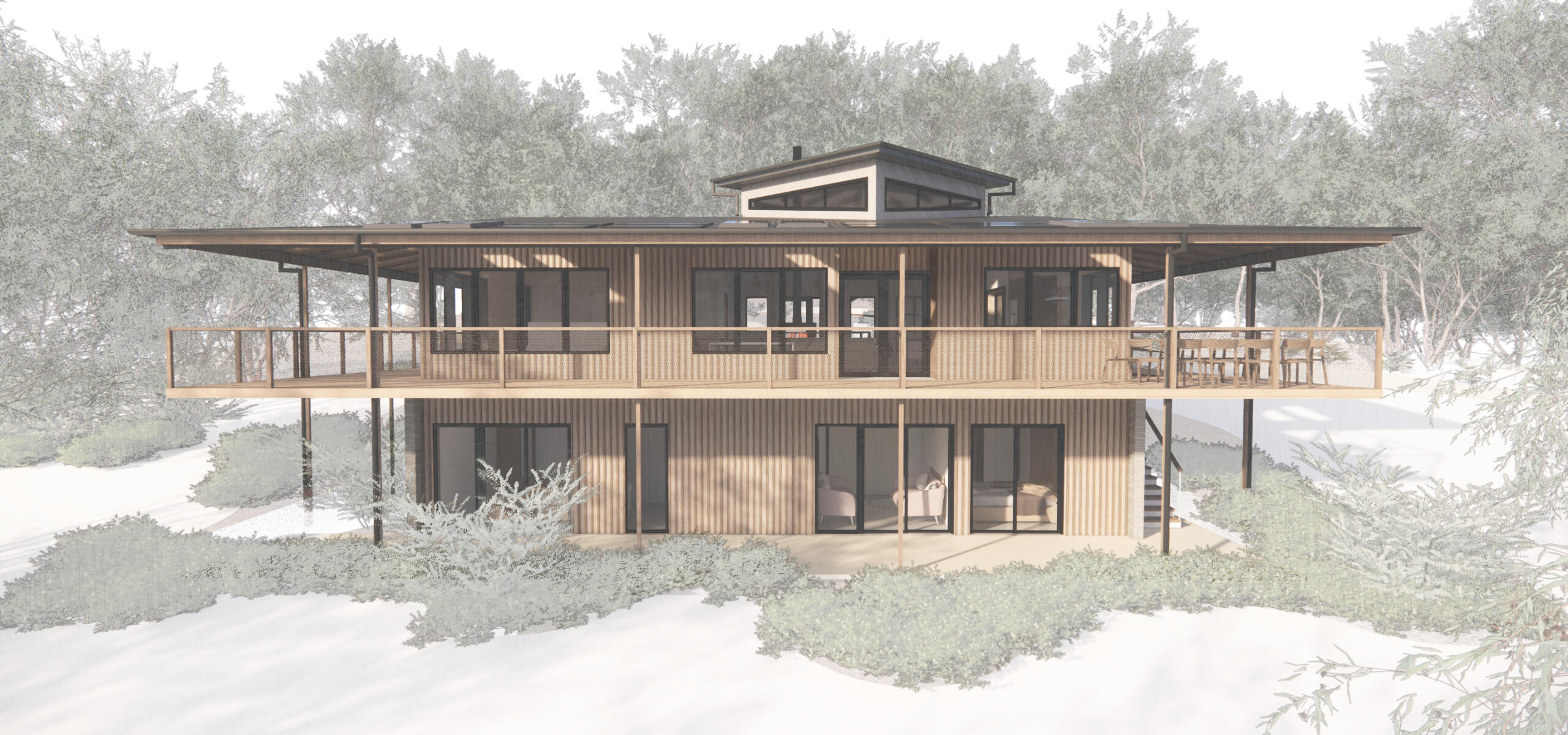
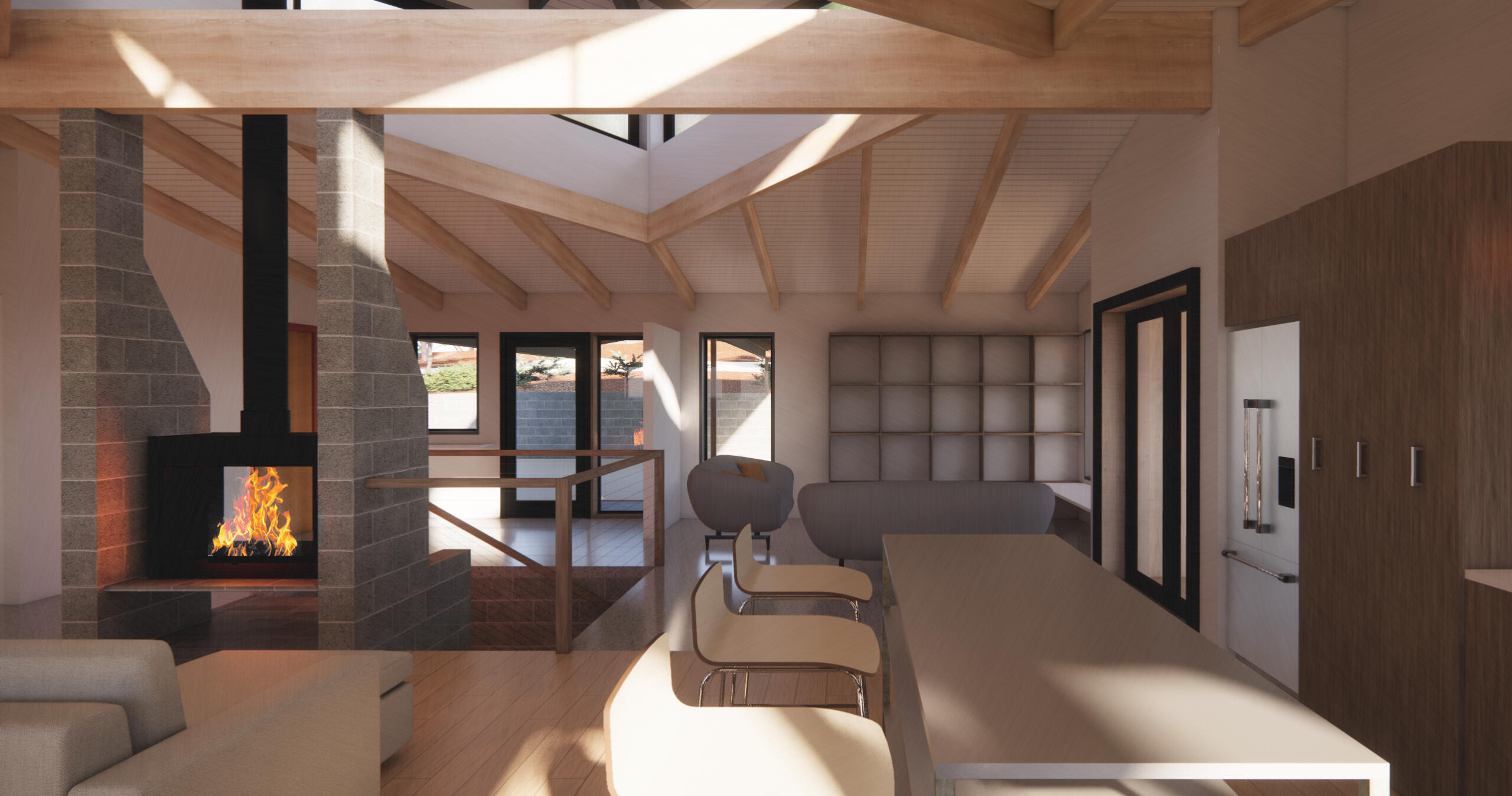
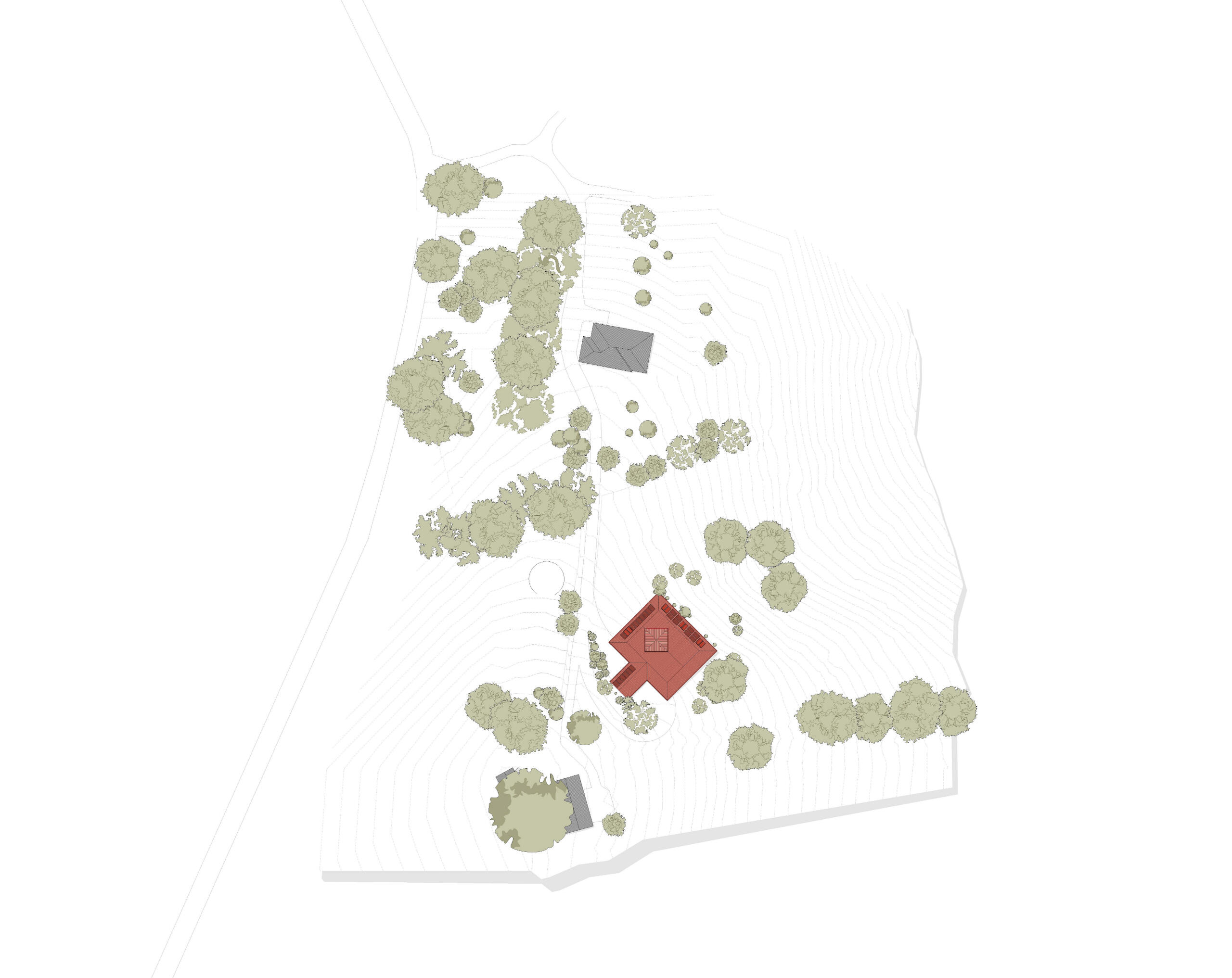
Anglesea Passive House
This Passiv Haus project is located on the Great Ocean Road in Victoria and was completed in 2023 when working at Studio B Architects. The plan responds to its context by creating a private courtyard adjacent to the main road and maximising solar gain. The project is BAL 29 rated and designed as a Passiv Haus.
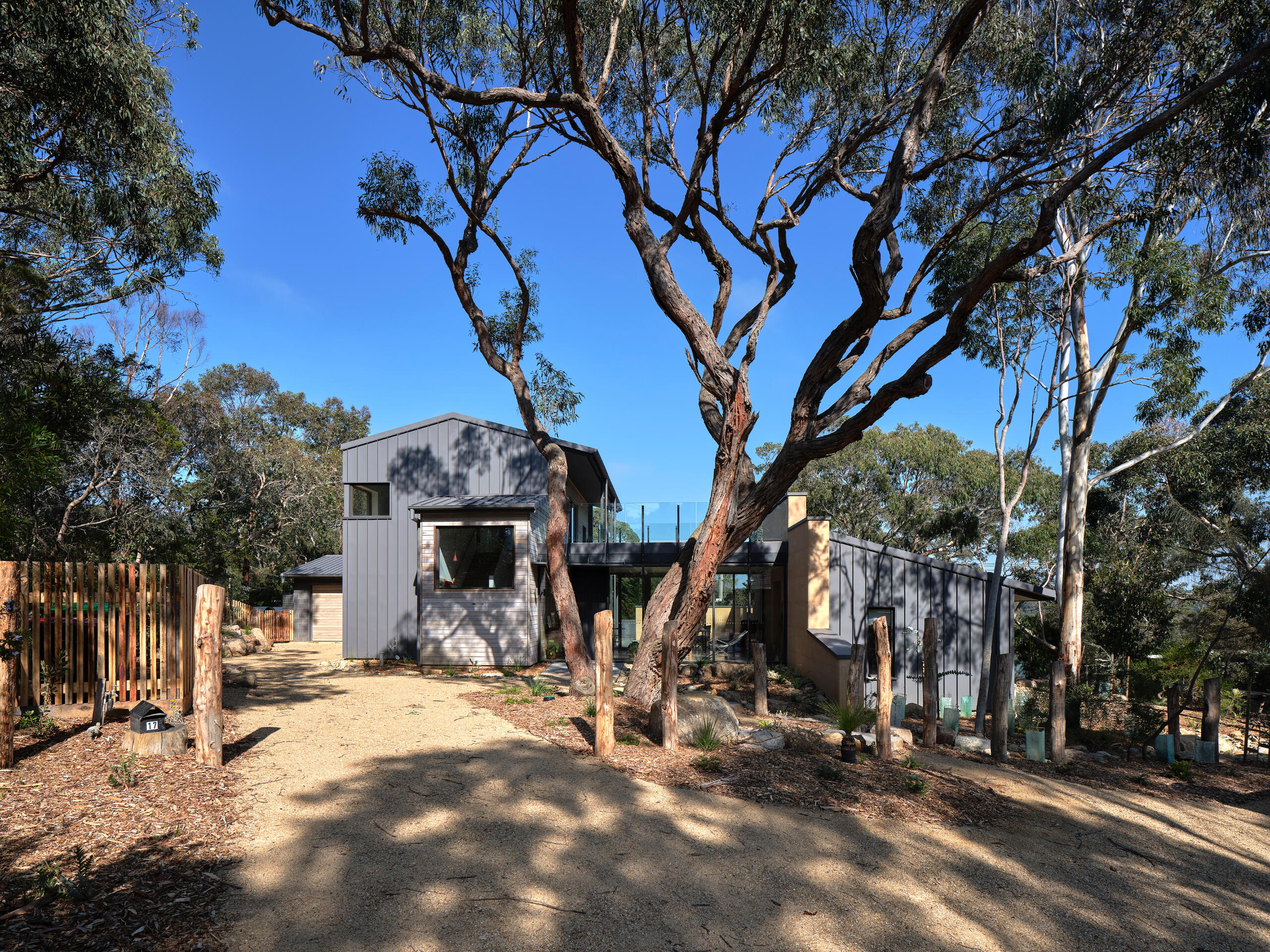
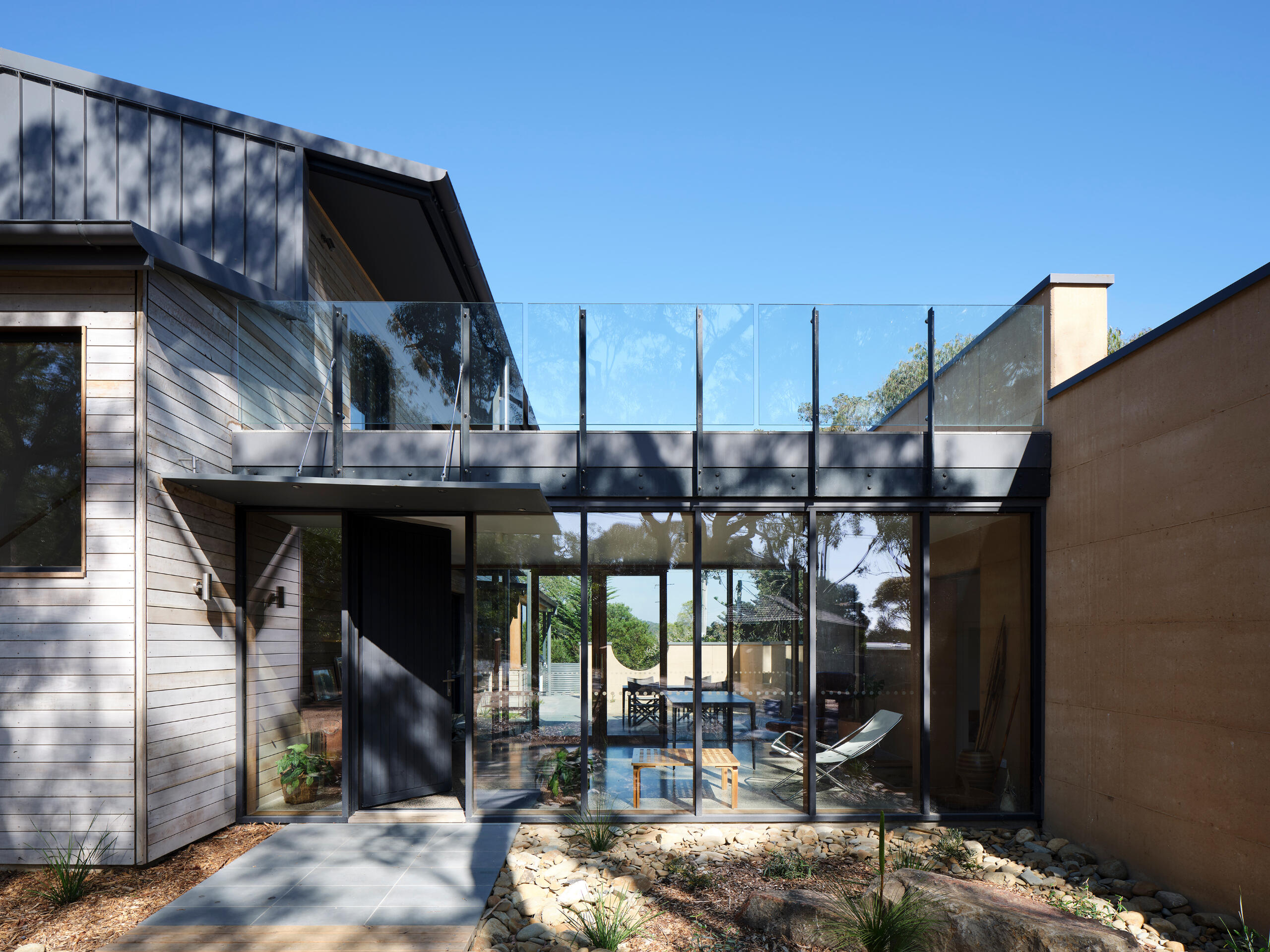
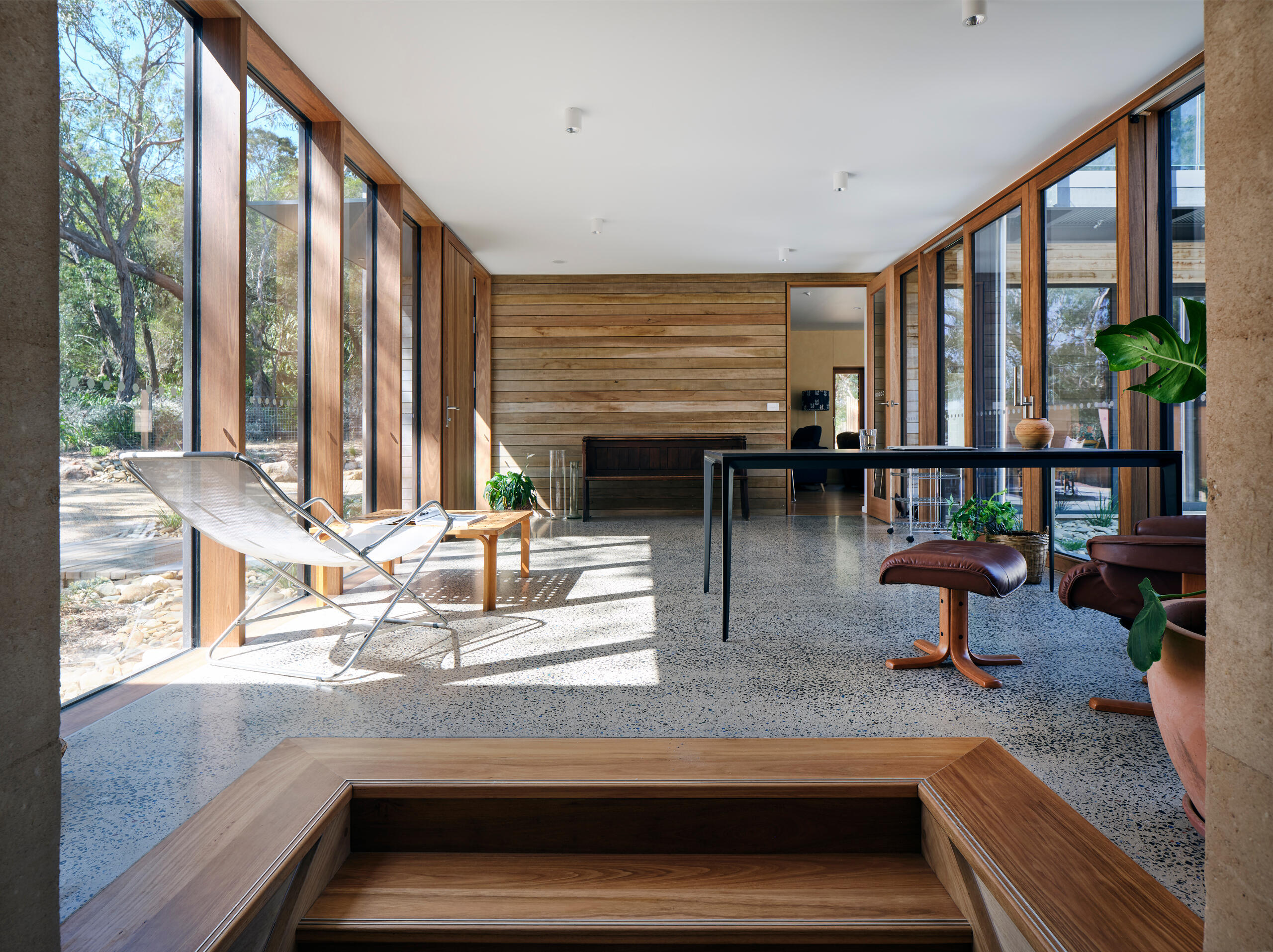
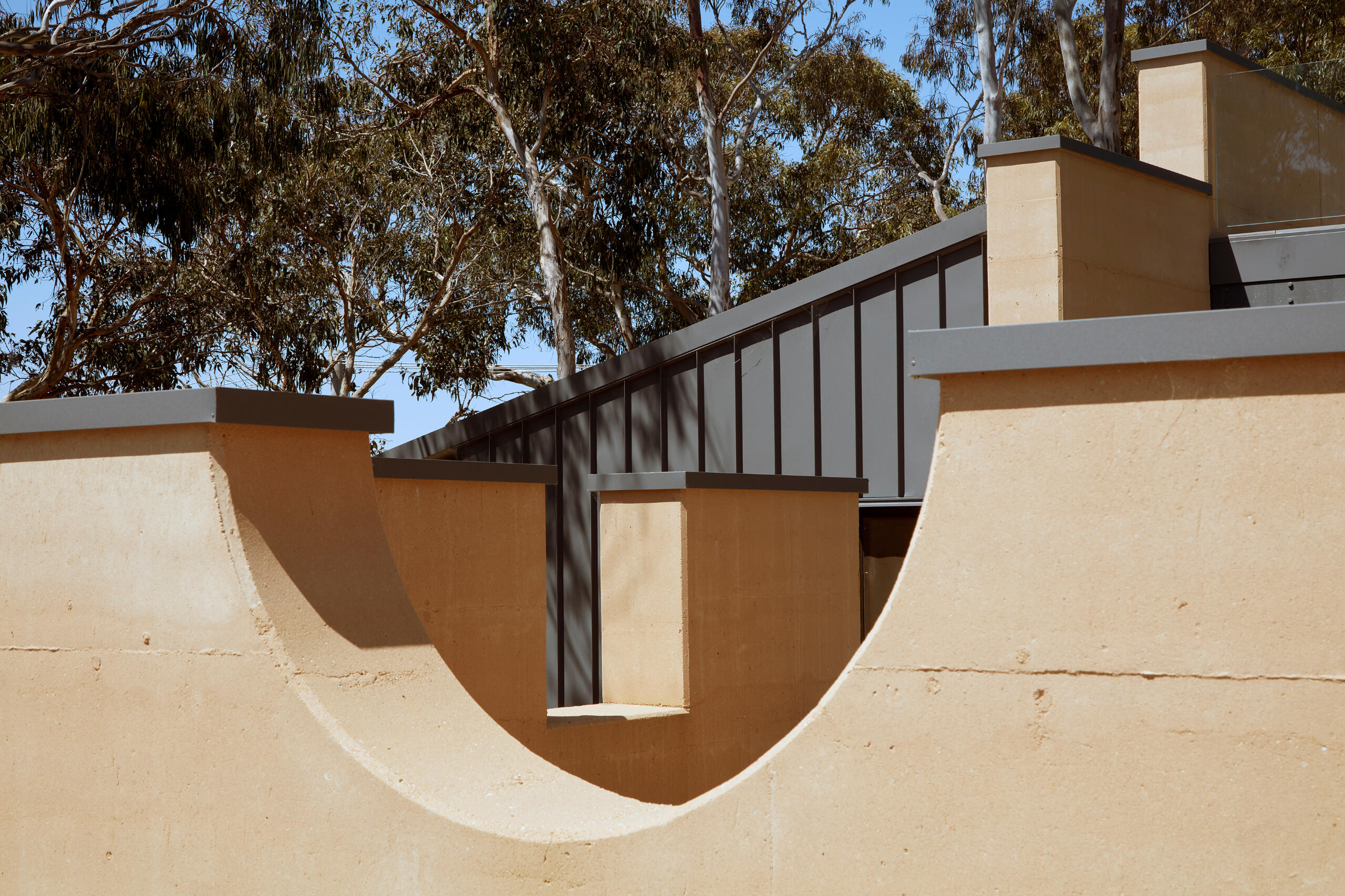
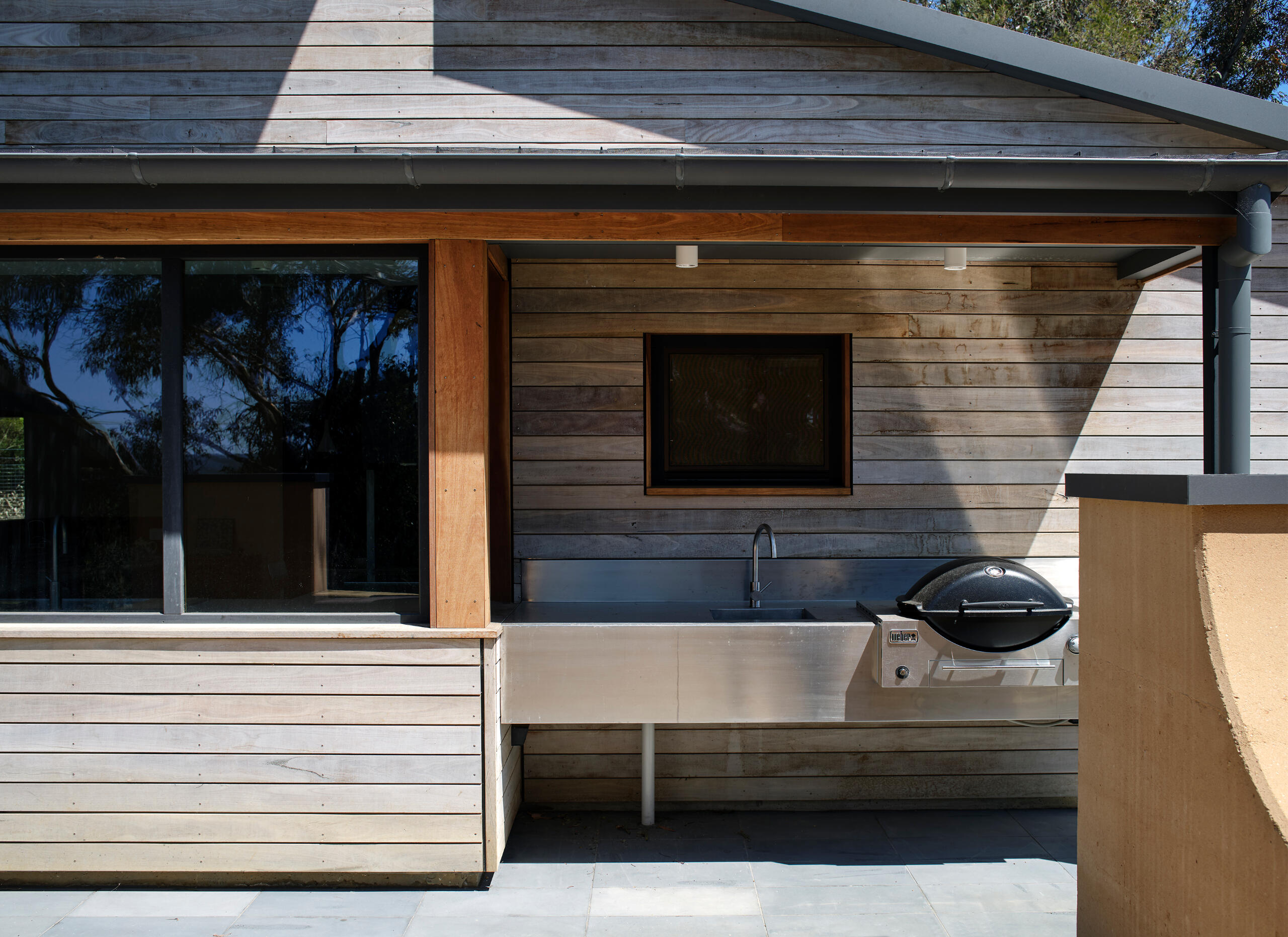
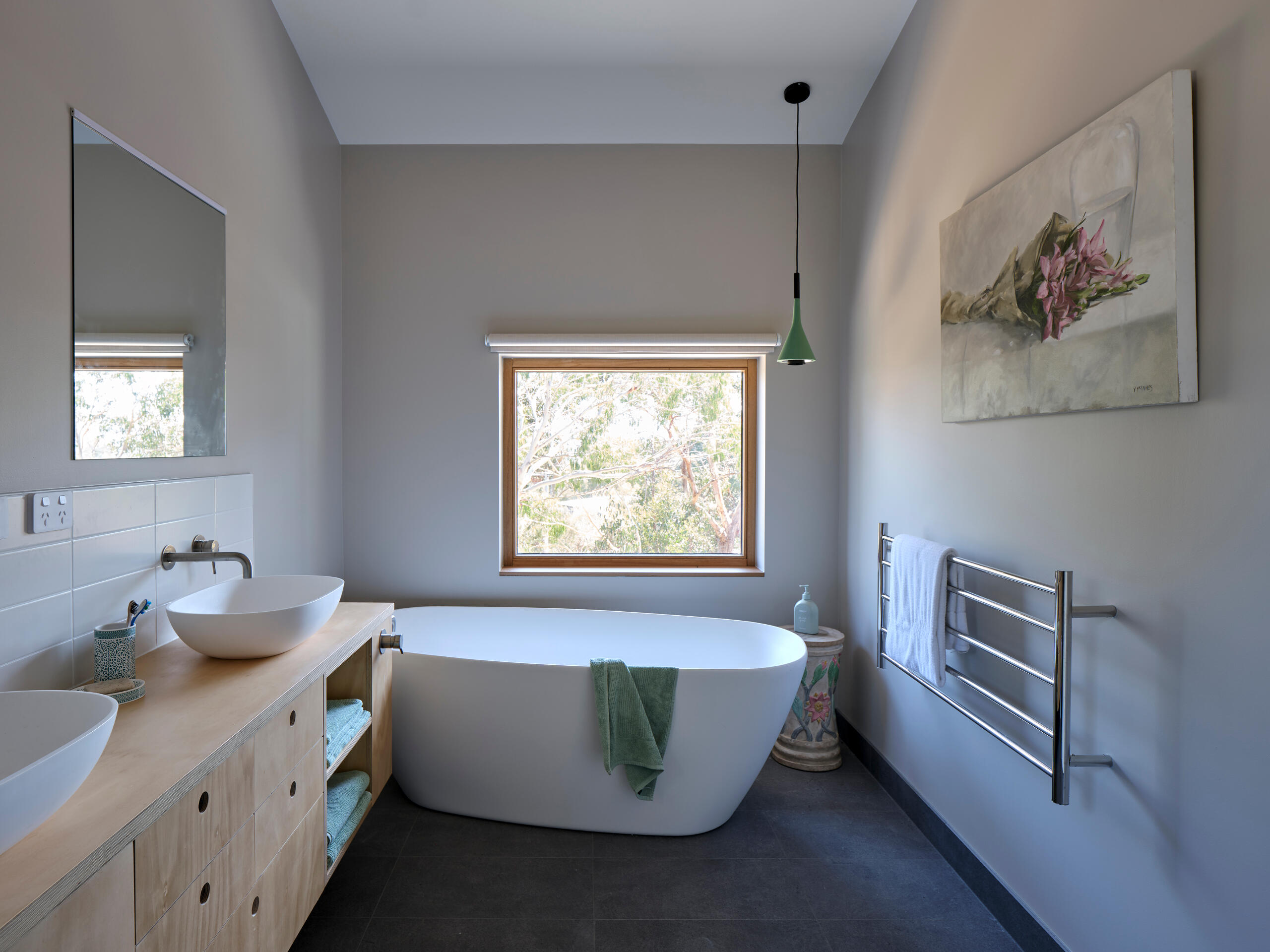
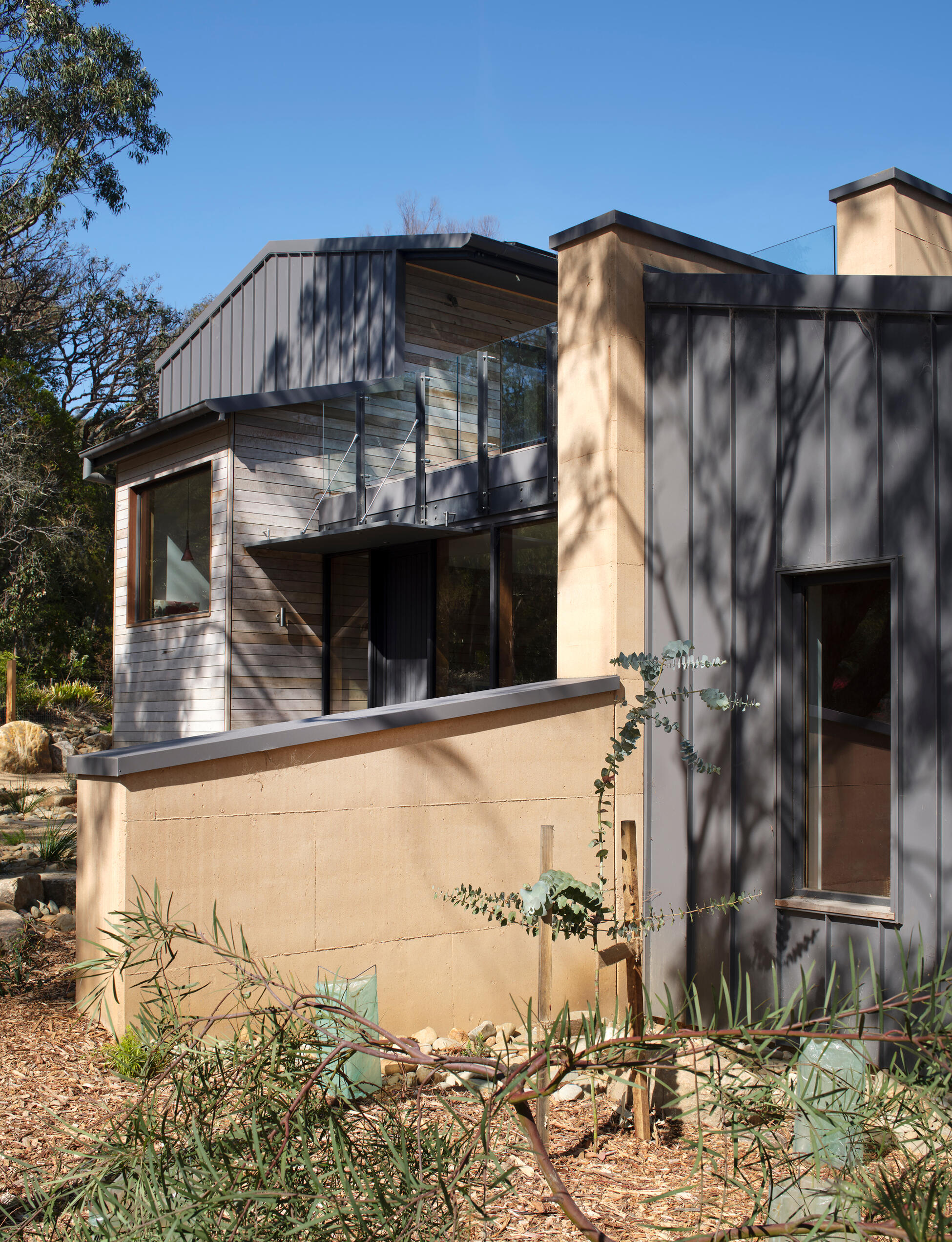
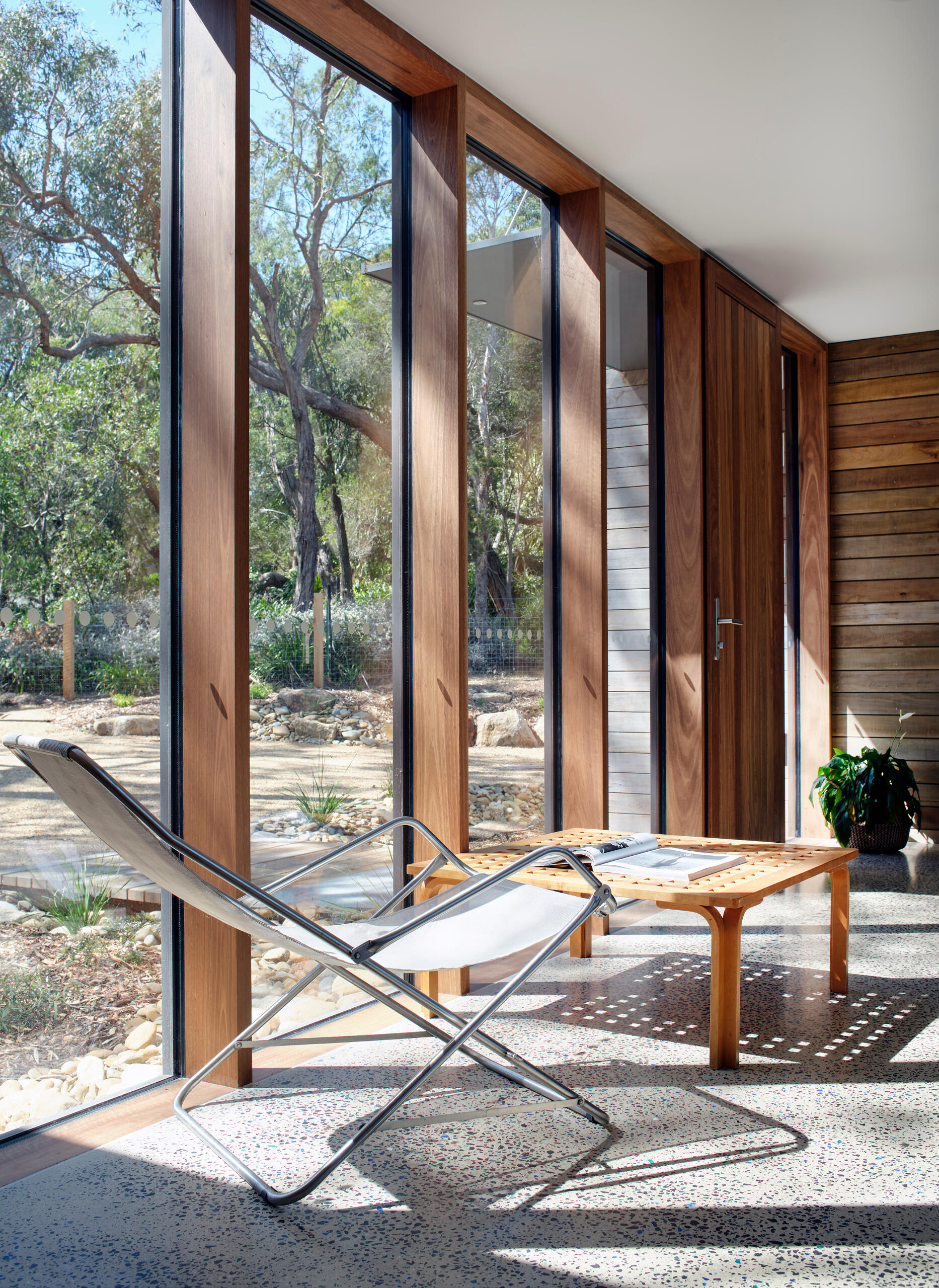
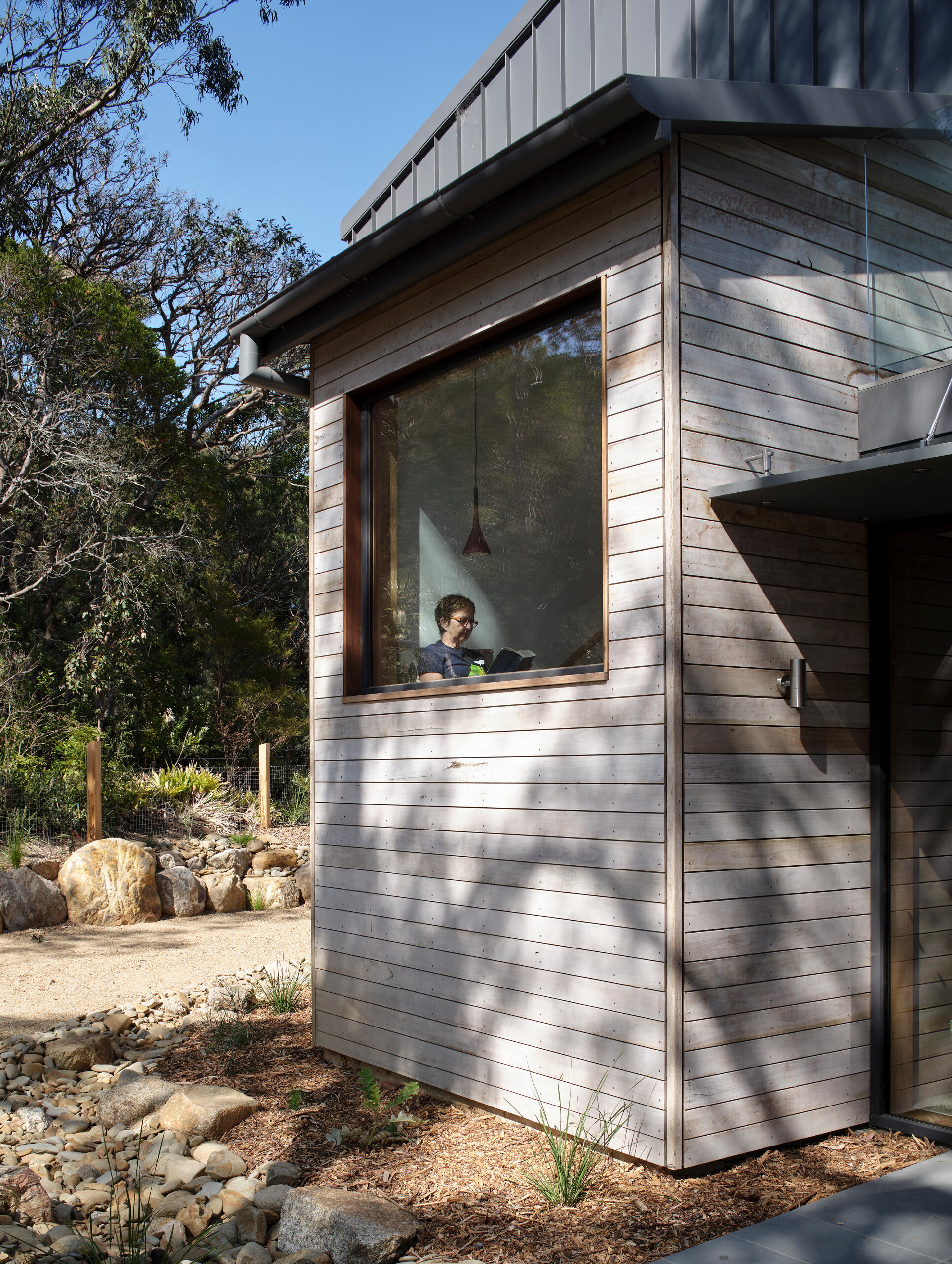
© Grounded Works Design Studio. All rights reserved.



